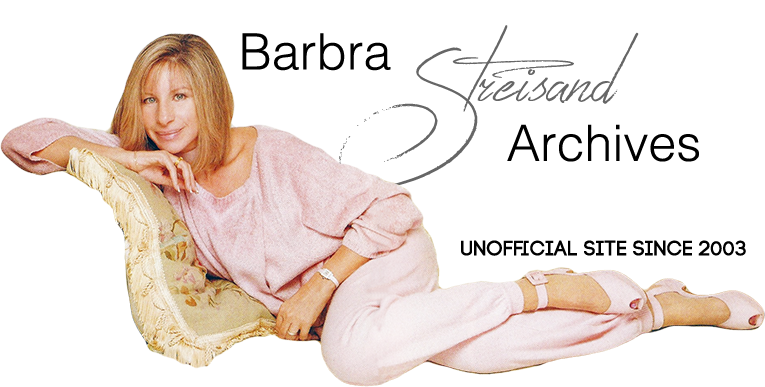Barbra's Cocky But Realistic
She Knows She Has 'Magic' To Become A Star
March 10, 1963
By JACK MAJOR
It may shock Carol Burnett fans, but some Broadway bigwigs think the popular TV comedienne has met her match in kookie newcomer Barbra Streisand.
Carol undoubtedly has a bigger following than Barbra. Heck, when Barbra was in Cleveland recently to co-host the Mike Douglas TV Show, it was obvious most folks had never seen her before. Had Carol been there, she would have been swamped by fans.
But nonconformist Barbra has a decided edge in a competition seldom witnessed by the public. Yet it is an area very important to performers.
It goes like this:
Carol and Barbra are eager to headline a Broadway show. Carol has done it before, scoring a success during the 1958-59 season in “Once Upon a Mattress," but she wants another conquest.
Barbra has had only a featured role in one Broadway show, and that was in David Merrick’s “I Can Get It For You Wholesale" last year.
Both Carol and Barbra tried to grab the lead in Merrick's “Fanny Brice Story,” which is scheduled to open later this year.
Carol read for Merrick three times, while Barbra was called back six times. The winner? Barbra.
Merrick's enthusiasm for Barbra is such that he has lined up two other Broadway shows for her just in case the “Brice” show doesn't materialize.
And that brings us to an important question: Just who the heck is Barbra Streisand?
You may have seen her—twice—on Jack Paar's old Tonight Show. She also had semi-regular status as a babbling, scatter-brain comedienne on Mike Wallace's PM.
She appeared recently on Garry Moore and Ed Sullivan and has an upcoming TV date with Dinah Shore.
Barbra also acquired some sort of distinction when she cut her first record for Columbia. She has the version of "My Coloring Book” that DIDN'T become a hit. (Sandy Stewart and Kitty Kallen were the lucky ones.)
Barbra hopes to fare better with her first album, due for release in March.
And strange as it may be, Barbra‘s rise to stardom—and it's assumed here the rise will continue— was primarily caused by her laziness, or lack of stick-to-itiveness.
She was only 17 when she decided, probably without reason, she was getting nowhere as an actress.
“So I entered a Greenwich Village talent contest as a singer,” she remembers. “And I won.”
Barbra was then offered the chance to sing at the Bon Soir nightclub. She went along with the gag and accepted the offer, appearing on the bill with comedienne Phyllis Diller.
“I was really a sight,” says Barbra. “I showed up in slacks and sandals. Luckily Phylis bought me a dress and some shoes for opening night. She was very nice to me.”
Barbra was held over 11 weeks and later returned as a headliner. She's been climbing ever since, and throughout her ascent has been unwilling to compromise her ideas.
She hates colors—or so she says—and insists on looking purposely drab all the time. (Even her lipstick shade, lndian curry, is a dull brown.)
“Well after all,” she barks, “I’m not a model.”
Barbra classifies herself an actress or comedienne-actress, not a singer.
“I’ve never taken voice lessons and never will,” she says. “I act out my songs more than l sing them.
“To tell you the truth, I don't like singing. If I listen to myself, l think l’m awful. I don't like other singers, either. What's singing? Acting is the thing. I think it's a waste of time to sit around and listen to music.”
Barbra was born in Brooklyn and didn't leave that borough for 14 years, when, at long last, she crossed the border into Manhattan to see a play.
“My mother still lives in Brooklyn. I don't know if she's ever seen the rest of New York,” she says.
Barbra made her stage debut as the ugly duckling sister in “Picnic” at the Malden Bridge Summer Theater near Albany, N.Y.
Barbra had two more whirls at Summer stock and moved into the Village in New York. Then she got discouraged enough to try singing.
Her style is simple. She opens her act standing almost stiffly center stage, looking like a little girl lost. Her arms dangle at her side. It sometimes takes her 20 minutes to warm up—to get with the mood of her songs, but when she arrives at the mood, she begins to move and her arms become as expressive as her voice.
Involvement in Barbra's performance is usually more emotional than musical. Her greatest fans liken Barbra’s effect on the audience to that accomplished by Judy Garland.
At 20, Barbra still looks like a teen-ager. Her often messy hair reaches her shoulders. She has a little girl's figure.
In conversation, she has more questions than answers, and while she may not be sure where she's heading, she's darn certain she's moving. (And to borrow one of her favorite expressions, “Know what I mean?”)
Barbra makes up for lack of perseverance with a cocksure attitude. Like she doesn't know how she got her singing voice, but she does think she has a good one.
What she lacks in humility, she gains by a realistic attitude toward her career.
“You take that ‘Fanny Brice’ show,” she says. “With Carol Burnett as the star, the producers would be guaranteed an advance sale of $12,000. With me, they'll be lucky to get $1.36.”
But Barbra is positive of one thing. Once people see her, she knows they won’t be sorry.
End.
